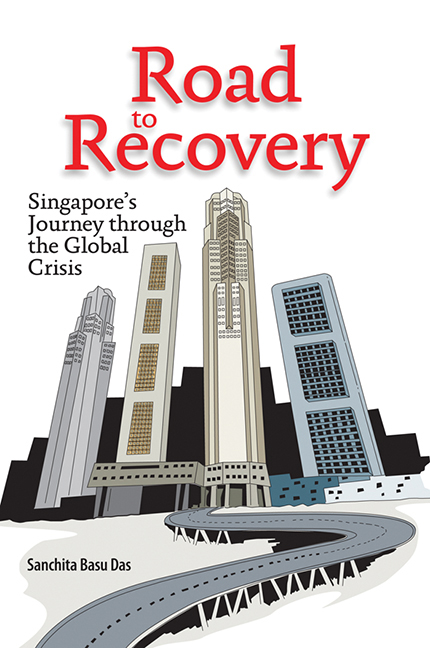Book contents
- Frontmatter
- Dedication
- Contents
- List of Tables
- List of Figures
- List of Boxes
- Foreword
- Acknowledgements
- Abbreviations
- 1 Introduction
- 2 Global Financial and Economic Crisis: Causes, Impact, and Policy Response
- 3 Impact of Global Economic Crisis on Singapore
- 4 Singapore's Policy Responses to the Global Economic Crisis
- 5 Singapore Economic Perspective and Future Policy Directions
- 6 Lessons Learnt
- Appendix I MAS Monetary Policy Statements
- Appendix II Key Budget FY2009 Initiatives
- Appendix III Summary of the ESC Key Recommendations
- Appendix IV Key Budget FY2010 Initiatives
- References
- Index
- About the Author
Foreword
Published online by Cambridge University Press: 21 October 2015
- Frontmatter
- Dedication
- Contents
- List of Tables
- List of Figures
- List of Boxes
- Foreword
- Acknowledgements
- Abbreviations
- 1 Introduction
- 2 Global Financial and Economic Crisis: Causes, Impact, and Policy Response
- 3 Impact of Global Economic Crisis on Singapore
- 4 Singapore's Policy Responses to the Global Economic Crisis
- 5 Singapore Economic Perspective and Future Policy Directions
- 6 Lessons Learnt
- Appendix I MAS Monetary Policy Statements
- Appendix II Key Budget FY2009 Initiatives
- Appendix III Summary of the ESC Key Recommendations
- Appendix IV Key Budget FY2010 Initiatives
- References
- Index
- About the Author
Summary
When I received the manuscript of this book from Ms Sanchita Basu Das, Lead Researcher for Economic Affairs in the ASEAN Studies Centre at the Institute of Southeast Asian Studies, I was, for a brief moment, reminded of the thoughts that ran through my head when I first heard the news of the collapse of Lehman Brothers. I felt at that time that the world was witnessing the beginning of something that may be a lot worse than any of the crises we have been through in our working lives. But nothing prepared me for the quantum of loss that the world suffered, both in financial and human terms.
There have been a lot of books written subsequently on what happened during those tumultuous days, and on the coordinated response of governments in the subsequent months. However, I was happy to see that this particular manuscript focuses on the actions taken specifically by Singapore policymakers to manage the effects of the crisis. Singapore has over the past few decades transformed itself into a major financial centre, a contemporary global city that attracts talents internationally. Yet, being a city that bridges the East and West, Singapore was one of the first in Asia to bear the brunt of the global crisis in 2008.
This book gives an insight into both the global crisis and the experience of Singapore. Aptly titled The Road to Recovery, it has indeed been a journey for the residents of this country, who endured pain and misery in the immediate aftermath of the crisis, but then slowly marched towards a recovery, albeit a fragile one. The directions to this path were of course led by the Singapore Government, who enacted Singapore's most radical budget ever in 2009. At the same time the Monetary Authority of Singapore kept a close watch on the currency to ensure it did not go through the same wild fluctuations that befell the G-10 currencies.
- Type
- Chapter
- Information
- Road to RecoverySingapore's Journey through the Global Crisis, pp. xv - xviPublisher: ISEAS–Yusof Ishak InstitutePrint publication year: 2010

